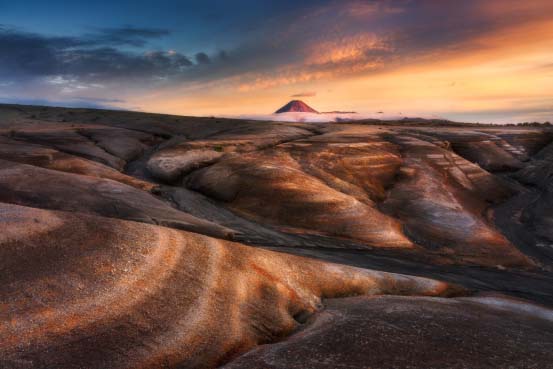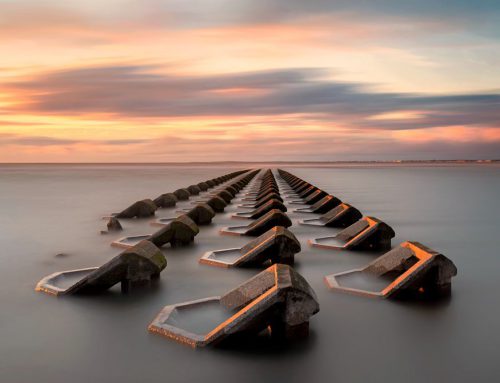
Australia-based couple Dylan Toh and Marianne Lim make up the team at Everlook Photography. They have traveled around the world and captured many amazing scenes, which were published nationally and internationally in various photography magazines. Since the arrival of their two children, there have been some changes in their travelling and photography.
NiSi is happy to have opportunity to talk with Dylan of Everlook Photography, a man who always maintains a love for travelling, photography and his family. In this interview, he shares us with some of his unique experiences.
Z for Zoe and D for Dylan
Z: Hi Dylan! Please feel free to talk! Firstly, could you tell us three interesting things about you that you want people to know?
D: The first interesting thing about us is that our first trip to Iceland in 2009 came about through complete randomness. We wanted to visit a location as far from home as possible before we had children and looked at globe of the Earth. You’ll find that Iceland lies completely opposite Adelaide! The second piece of trivia is I only need about 6 hours sleep a night while Marianne prefers 8. That’s why most of our dawn shots are by me! The final bit of information is that I love fitness training which keeps me in shape for doing long hikes while retaining the energy and drive to photograph remote locations instead of resting.

Taken at Lake Bonney in South Australia
With NiSi V5 PRO holder, polarizer, Soft GND (4 stops)
Z: How and when did you become interested in photography?
D: Marianne and I have always been interested in travelling. When we return from any trip, we are keen to have some memories representative of the visual and emotional elements of what we had experienced on the road. In the early 2000’s, we felt that we weren’t consistently achieving the results that we wanted using a film SLR since we were both working full time and did not have the time available to allow a full commitment into learning the finer aspects photography. In 2006, we took our first steps toward improving that learning curve by investing in our first DSLR camera, the Canon 20D.

Taken at Warwick Resort in Fiji
With NiSi Hard GND (3 stops)
Despite this, as I was a doctor in training, there was very limited time to go travelling near or abroad. The next step in our photography came in 2009 when I had fully qualified as a general physician choosing to work limited hours thereby freeing up much more time to expand our photographic skills. We travelled more, photographed more subjects including multiple weddings and gradually developed our style of photography while always maintaining a love for the outdoors primarily.

Taken at Mount Ngauruhoe in North Island, New Zealand
With NiSi Medium GND (3 stops), ND (10 stops)
Z: What types of photography do you enjoy? Do you have a preference while shooting?
D: As discussed above, we primarily love shooting scenes of nature and wilderness though we will attempt any good photographic subject!

Taken at Cape Pillar in Tasmania, Australia
With NiSi Medium GND (3 stops), ND (6 stops)
Z: Your family consisted of a photographer couple and two children, has that been a challenge to your work. How do you juggle family and photography?
D: Before we had children, Marianne and I used to spend hours at each location and photograph scenes throughout the whole day on the road. As our children arrived, changes needed to made though we have always tried to incorporate them into our trips. When they were very young, unable to walk and able to fall asleep on our backs, we ironically didn’t have to adapt too much. As long as we timed awake times with shooting, we could both continue to shoot throughout the day and through sunsets and sunrises. We invested in a good child carrier (Macpac ‘Possum’ for those interested) to allow this style of shooting.

However, as they grew older and became more mobile one of us would end up looking after the children while the other took pictures. When they were still under 4, we could still play in nature areas while we photographed. Now that they are both over 5 and Marianne has moved on to other artistic media, the photography on our trips has been limited to me venturing off in the dark for a dawn shoot before returning for children’s activities and family time during the day. Our locations are planned to have a mixture of nature and urban activities and we usually ensure that we spend a minimum of two nights in any one location so that we can at least be settled for a period of time.

Dylan and his family
Z: When did you start using NiSi filters and why?
D: I’ve always had a tendency to shoot long exposures and have always aimed to obtain images in one frame at the scene. For this reason I had been through many different combinations of ND filters and GND filters in the past. I was hand holding many filters since most filter holder systems did not incorporate the use of a CPL well and caused vignetting when shooting wide. This resulted in frequent scratches of filters due to accidental contact and images that needed to be cropped severely at times. I also found that dense ND filters of different brands gave rise to colour casts. When I was offered a role to test the V3 system and an assortment of filters, I felt that this was an extension of what I was already doing. To my surprise, the holder system ticked all the boxes in terms of previous shortcomings: An incorporated CPL, wide angle shooting without vignetting in a holder and virtually cast free long exposures.

Taken at Morant’s Curve in Canada
With NiSi Landscape polarizer, Soft GND (3 stops), ND (10 stops)
Z: Which NiSi products do you usually use in your work?
D: Currently I am using the V6 100mm filter system on one body and the V5 galaxy on my second setup. My most used filter is a 3-stop Medium GND. I also carry the 3-stop Hard GND and Soft GND in my kit. My favourite ND filter is the 6-stop filter used at sunset or sunrise. I also carry around a 10-stop and when shooting nightscapes, I also carry the Natural Night Filter.

Taken at Sandcut Beach in Vancouver Island, Canda
With NiSi Medium GND (3 stops), ND (6 stops)
Z: Among all the photos you took with NiSi filters, which one is your favorite? What went into creating it?
D: This scene from Lake Oberon perhaps encapsulates my favourite hike and the reason why I take the extra weight of a filter holder system into the wilderness. The hike to this location takes two days through muddy elevated terrain. We had excellent weather on the walk in but wet weather on the way out. This was our last morning of shooting before the bad weather set in during the trip. As clouds cleared, the sun broke through with brilliant colour which I captured with a 10-stop ND filter to accentuate the moving clouds.

Taken at Lake Oberon in Australia
With NiSi ND (10 stops)
Z: Would you share one particular scary or exciting day from one of your shoots?
D: I have had the good fortune of experiencing many exciting days in the field without too many scary moments. I have fondest memories of hiking in Tasmania and New Zealand. Perhaps my most memorable day in the field was in 2017 when I hiked to Lake Angelus in New Zealand. It was early spring and I was expecting some snow but as I climbed over the ridgeline on a 15km walk, the whole area was covered in snow like a winter wonderland. I had never been in thigh deep snow before and when the snow drifts passed over, there were almost whiteout conditions. It was one of my most memorable experiences and gives me a thirst for venturing out and photographing deep winter conditions elsewhere in the world!

Taken at Lake Wanaka in New Zealand
With NiSi Landscape polarizer, Medium GND (3 stops), ND (6 stops)
Was awarded one of the Top 25 photos on Flickr in 2018
Z: Is there any advice you would pass on to young people learning the craft?
D: My main piece of advice is not to rush in to photography expecting instant success that many established photographers have spent years building. I’ve seen many extremely talented photographers suffer burnout and no longer continue to shoot. By all means participate in photographic communities in real life and online, but don’t let competitions, online opinions and social media trends dictate how you shoot. I firmly believe that photographers produce their best work when they photograph the types of scenes that brings them true joy and a sense of fulfilment.
Z: What’s your plan for the coming months? Are there any locations you really looking forward to photographing in the future?
D: In 2019, we have 2 current family trips being planned. In April, we are visiting Tasmania during autumn when the native ‘fagus’ season is in full swing. Hopefully in July, we are hoping to visit Vanuatu for a mixture of different types of photography. Marianne , who has recently earned her diving certification, is also hoping to expand her horizons with underwater photography though filters may be of limited use in that situation! I also have some time off in December but have no current plans. Perhaps we will visit somewhere for winterscapes to escape the Australian summer heat!





